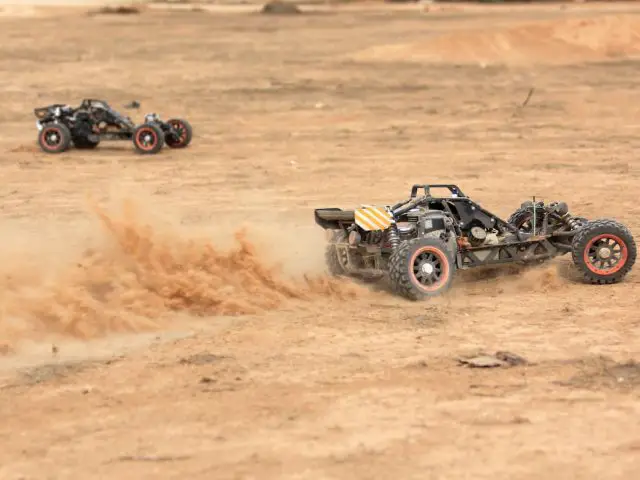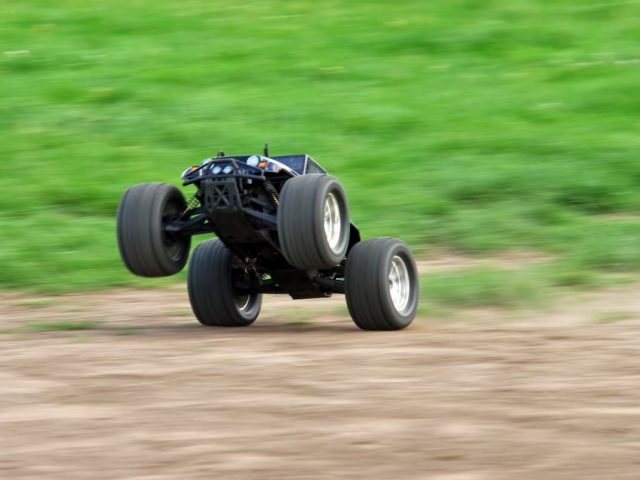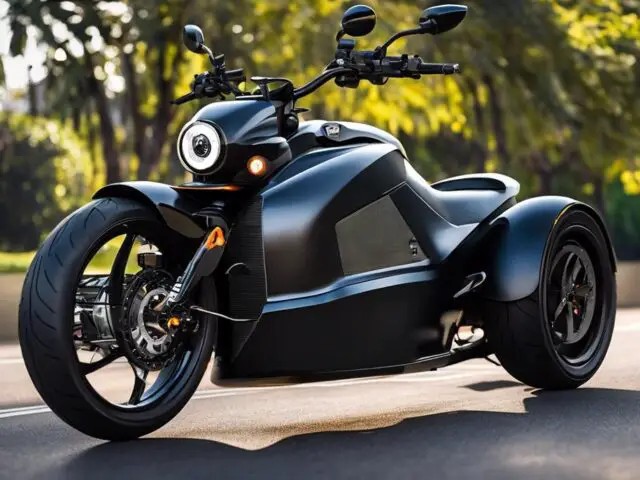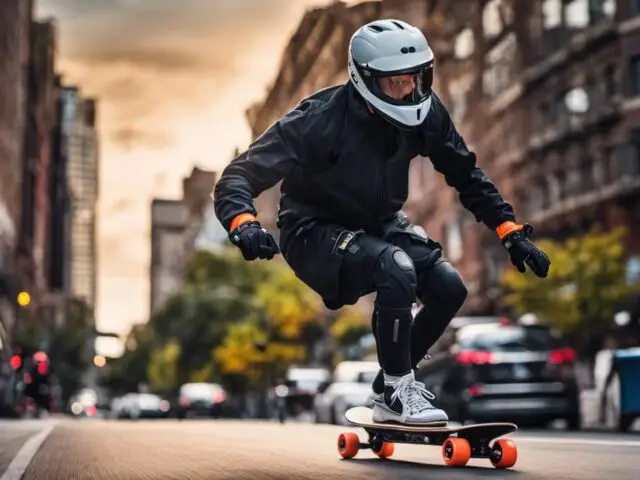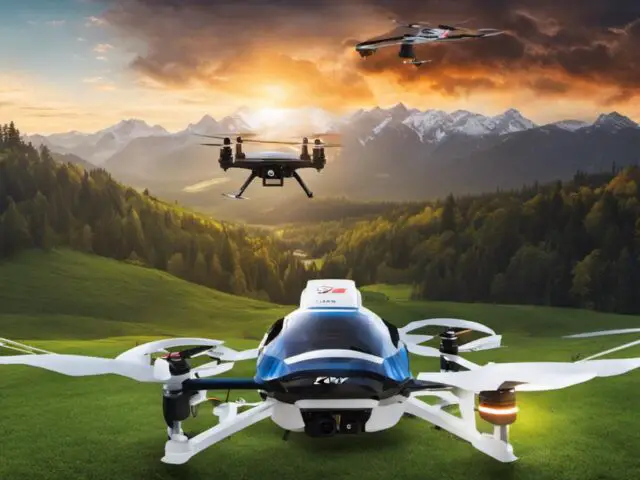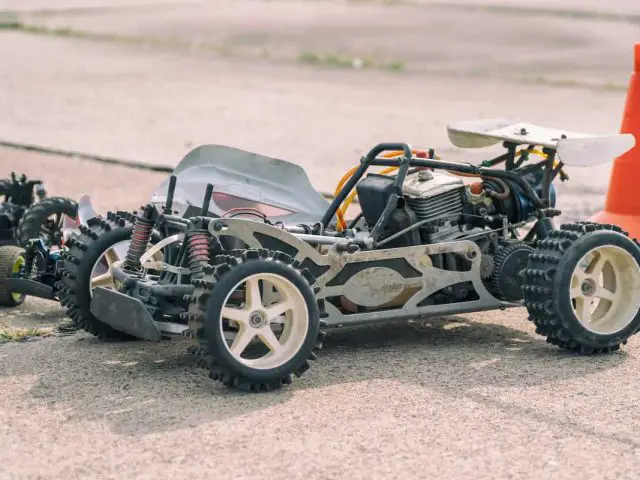If you are wanting to get into flying FPV drones, but lack the space needed to fly the bigger drones, or just want something that can fly literally anywhere safely, Tiny Whoops are a must have. I have had more fun flying my “tiny whoop” around more than I have with my larger frame drones.
You may have heard the term and asked yourself “What is a tiny whoop?” Tiny Whoop is actually a generic term used in the industry to describe a very small “micro” drone. These drones typically have a wingspan of 65mm – 77mm.
Tiny whoops have been around for quite some time and if you are new to the hobby, you may not know exactly what makes a drone a “tiny whoop” or what to look for when purchasing one. Let’s dive into all this and more, so you can start “diving” on your whoop.
Who Invented the Tiny Whoop?
Tiny Whoop is actually a trademarked term that belongs to an FPV pilot from Fort Collins, Colorado named Jesse Perkins. Jesse Perkins is a pilot for Team Big Whoop and spent years testing out all kinds of different combinations of parts to finally make his “Tiny Whoop” idea a reality. (1)
Technically none of the other drones in this micro category are called Tiny Whoops but the term has become so popular in drone culture, that any micro sized drone is just called a tiny whoop. So for the rest of the article, I will be using the term “Tiny Whoop” to describe any micro drone.
What Are Tiny Whoops?
Starting out in the FPV drone world can often be intimidating and the tons of terms thrown at you about frames, motors, and everything else can be overwhelming at times. You may not know what tiny whoops are. Essentially they are a miniature or micro sized version of a normal FPV drone. It is a very small, first person view drone that gives you the sense of real flight, hence the term first person view. You can turn any area into a flight arena safely because of the design. (2)
Just like their larger brothers “tiny whoops” come with all the necessary equipment to fly to include motors, propellers, flight controls, camera, and more. Tiny Whoops are capable of flying virtually anywhere indoors and do so safely because of their shrouded propellers. Shrouded propellers are propellers that have a shield around them to protect them from getting damaged, but also protect your kids, pets, and other people as well. Most tiny whoops can fly outside on non windy days just fine, but the real fun to be had is indoors.
Are Tiny Whoops Fun and Why?
Tiny whoops are some of the most fun drones I have flown! Not only can you fly them indoors safely, but you can get everyone inside involved. They can be flown anywhere! Their tiny size makes them ideal for flying under desks, above a spinning ceiling fan (be careful with this one), or even through someone making a circle with their arms! I’ve seen videos of people flying them in airport terminals and I myself have flown in the mall. They always bring in attention and are a great way to introduce anyone to the hobby of drone flying.
Just like their larger brothers, tiny whoops are capable of acrobatic maneuvers such as flips, rolls, and even dives! It’s safe to say these drones are just as capable as their larger counterparts due to their power to weight ratio. This also allows them to have a decent flight time of up to 3 to 4 minutes per battery which is much better than many full size drones that struggle to hit 2 minutes.
You also don’t have to worry about walls or obstacles for the most part due to the design and the shrouded propellers. They are basically bumper cars that fly! If you do happen to damage something, they are generally much easier and less expensive to fix.
What Size is a Tiny Whoop?
The size of a tiny whoop is really what makes it a class all of its own to me. They are the smallest of the drone classes and sport a wingspan (the distance diagonally between the motors) of 65mm to 75mm and generally have propeller shrouds. They also sport a set of either 31mm or 40mm propellers.
The Different Types of Tiny Whoop
65mm Tiny Whoop
65mm tiny whoops are generally the more popular types because they are the original models and are much easier to fly and control indoors. With a smaller base, and simplicity of operation, the 65mm tiny whoops are easier for newcomers to learn to fly.
75mm Tiny Whoop
75mm whoops were introduced much later than the classic 65mm and are more powerful. With the larger design, more powerful components were able to be included. This makes it a bit harder for newcomers to learn to fly. With these more powerful components comes the need for better, more powerful batteries, which also is a reason for people choosing to go with the 65mm variants.
Brushed Motors vs. Brushless Motors For Tiny Whoops
Brushed Motors
- Brushed Motors Are Cheaper – Brushed motors are cheaper due to the simplicity of their design and are for more budget friendly pilots.
- Brushed Motors Are Less Powerful – Brushed motors are less powerful than their brushless counterparts due to the design. The mechanical limitations of the brushes inside the motors limit what they can do. They can be tuned much easier to get the speeds you need but are less efficient by 10% or more.
Brushless Motors
- Brushless Motors Are More Powerful – Brushless motors offer much more power on demand than the brushed motor versions. This allows these little drones to fly at higher speeds and perform more acrobatics due to the increased power ratio. Faster, more precise, and more agility are a recipe for a much better flying experience.
- Brushless Motors Last Longer – Brushless motors will last much longer and require less maintenance than brushed due to the nature of how they work. The rotor and stator in a brushless motor never touch each other so there is less wear and tear on those two components.
- Brushless Motors Require Less Maintenance – There are no brushes to clean or to replace in a brushless motor. You might need to maintain the bearing inside the motor depending on how much you use it and how rough you are on the motor itself. A little lube is all it takes to keep your bearing running properly for many years. In fact, brushless motors can last 5 or more years with minimal maintenance with no loss of power and nor problems at all.
- Brushless Motors Have Support For Turtle Mode – Turtle mode is a really cool addition to any drone because it allows the pilot to flip the drone back over, hands free, if it lands on its head. The way turtle mode works is that it only allows the motors on one side to operate. The pilot gives thrust and the motors push only one side of the drone over and it will flip you 180 degrees. It takes a little practice to get it down, but man is it a time saver and super fun.
- Brushless Motors Have Updated Firmware – Updated firmware on tiny whoops allows them to run more efficiently and prolong battery life. With the addition and RPM filter and 48 KHz ESC frequencies, it makes running brushless motors a lot less intimidating and fixes their most glaring issues.
1S vs. 2S Tiny Whoop Batteries
Just like the motors discussed above, one of these is more powerful than the other. 1S and 2S just mean the cell count inside the battery. More cells equals more power. 1S batteries are slower, quieter, and safer due to their lack of power.
2S batteries offer more power for things like racing and doing stunts. 2S batteries are almost required for heavier whoops in order to keep them in flight and to provide enough power.
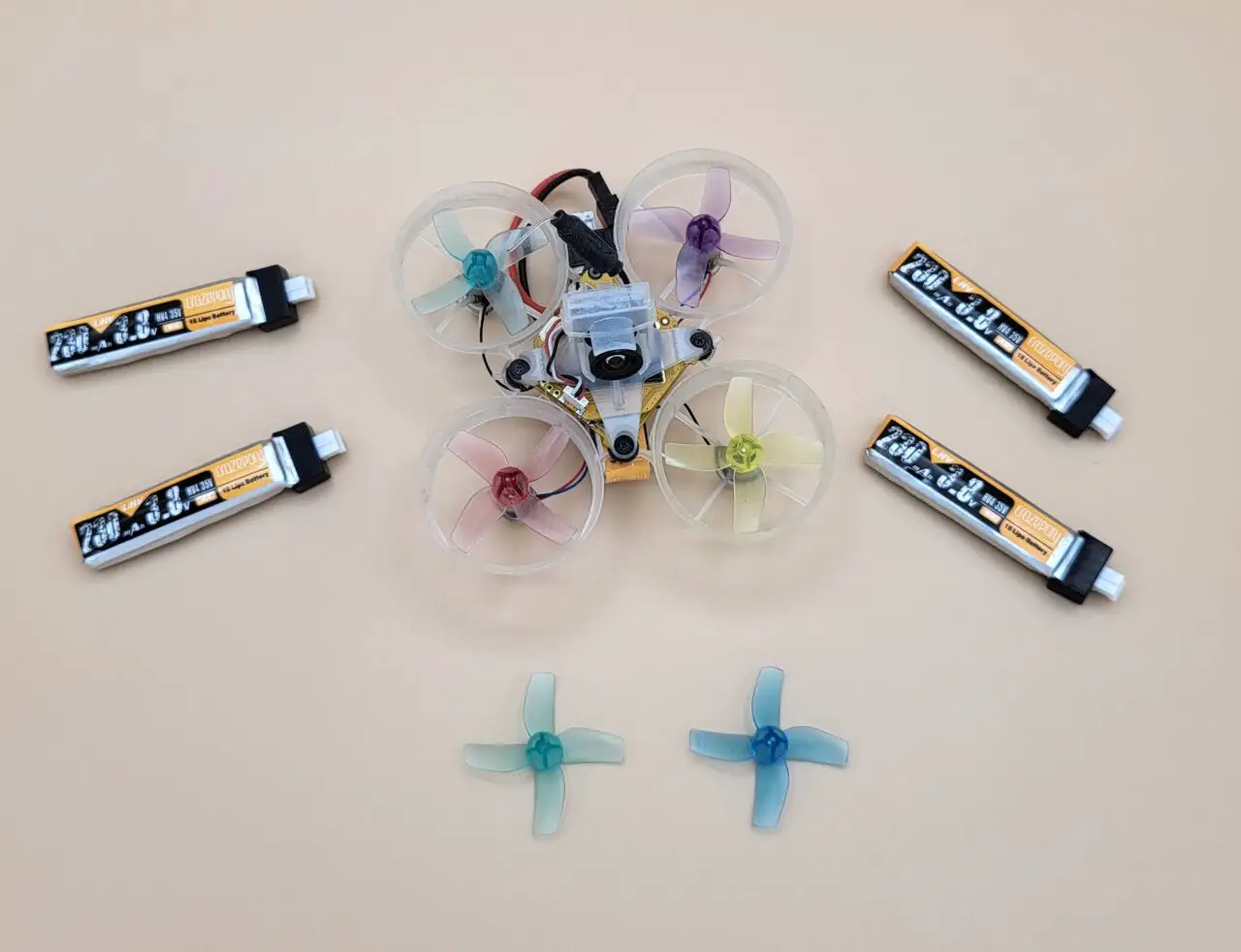
What Are The Best Tiny Whoops?
Mobula6
The Mobula6 is one of the most durable tiny whoops with great performance in such a small package. It comes with all the accessories needed to get started and is probably the best all-in-one package to get started in FPV.
I would suggest going for the larger KV motor in order to allow you to grow into your drone. You can always tune your motors if they have too much power for you at first. The Mubula6 is fun, fast, and simple to fly straight out of the box.
Pros:
- Great value
- Fantastic performance
- Great agility and maneuverability in tight spaces
- Longer flight time
Con’s
- Quality control
| Image | Title | Price | Prime | Buy |
|---|---|---|---|---|
 | Happymodel Mobula6 1S 65mm Brushless Whoop | Prime | No Results |
NewBeeDrone AcroBee65 BLV3
The BLV3 is a great little whoop and is super fun to fly. In terms of performance, it is very close to the Mobula6 listed above. It costs a good amount more than the Mobula but comes with GREAT service and outstanding quality. They are also American made so you can support their US based business. The BLV3 is tuned great as soon as you receive it and has tons of power. The only thing lacking when compared to the Mobula is the VTX and a higher price point. (3)
Pros:
- Great Quality
- Amazing Customer Service
- Fantastic performance
- Great agility and maneuverability in tight spaces
- Longer flight time
Con’s
- No ELRS Receiver Option
- Lower Power VTX
Honorable Mentions
2S is almost mandatory for me when it comes to the larger whoops like the ones in the 75mm class. I have some 1S whoops listed here, but if you want to take your drone outside, then you need to pick a 2S capable whoop.
Moblite7
The Moblite7 is a much lighter version of the Mobula7 but only comes in a 1S battery variant. Because of the light weight, it excels in its speed capabilities. This low weight, however, impacts durability so you better hope you don’t crash too often. Longer flight times are another benefit of having such low weight.
Pros:
- One of the fastest whoops on the market
- Superior Battery Life
Con’s
- Harder to control
| Image | Title | Price | Prime | Buy |
|---|---|---|---|---|
 | HAPPYMODEL Moblite7 1S 75mm Drone | Prime | No Results |
Moblite6
The Moblite6 is the smaller and less powerful version of the Moblite7.
Pros:
- Better Durability
- Fantastic performance
- More Precise Maneuverability
Con’s
- Less Powerful
| Image | Title | Price | Prime | Buy |
|---|---|---|---|---|
 | HAPPYMODEL Moblite6 1S 65mm Whoop | Prime | No Results |
Other Mobula Whoops
Mobula is obviously a big name in the whoop market and they make great products. You really can’t go wrong when purchasing a Mobula product. Check out these other new releases from Mobula that are sure to have you flying around and having all kinds of fun.
Mobula7 1S & Mobula7 HDZero
| Image | Title | Price | Prime | Buy |
|---|---|---|---|---|
 | Happymodel Mobula7 HD 2-3S 75mm Whoop | Prime | No Results | |
 | Happymodel Mobula7 2S 75mm Brushless Whoop | Prime | No Results |
Emax TinyHawk 3
The Emax TinyHawk 3 is an amazing little whoop and most pilots love it because of the features similar to larger drones that it has, such as turtle mode and smart audio.
Pros:
- Better Durability
- Fantastic performance
- Better Build Quality
Con’s
- Larger frame
- Frame Specific Batteries
The TinyHawk S has an inverted motor design that adds rigidity but also helsp with the aerodynamics. This allows for longer flight times and greater handling and maneuverability over traditional whoops.
| Image | Title | Price | Prime | Buy |
|---|---|---|---|---|
 | EMAX Tinyhawk 3 200mw VTX 1s Drone | PrimeEligible | No Results |
Which Tiny Whoop Should You Choose?
I personally like the 65mm whoops the best. While 75mm whoops tend to offer you more flight time, faster and more stable flight, and better outdoor flying, 65mm are much more fun for acrobatics. 65mm whoops are more agile and can go through smaller gaps.
For 65mm Whoops I would personally choose Acrobee. For 75mm whoops, go with the Mobula7 1S.
Helpful Links
For all your RC Questions, Click HERE
If you are interested in RC cars and trucks, RC World has you covered.
For RC boats and watercraft, check these articles out.
For all your RC Airborne endeavors, we have everything you need.
Why RC Is So Expensive [ Hobby Guide For Newbies ]
I personally love RC cars, and this is an old hobby of mine. But there is a con of having RC cars as a hobby. That is, RC…
Pushing Performance Limits [ Maximizing Cheap RC Cars ]
Top tier RC cars can be pretty expensive. Not everyone has the luxury to invest loads of money on a good quality RC car. But, you’re a RC…
5 Key Benefits of E-Bike Commuting Over Traditional Biking
There’s an electrifying new shift in the world of commuting and it comes in the form of e-bikes. More and more Americans from all walks of life are…
DIY Guide: Build Your Own Electric Trike
Embarking on the journey of building your very own electric trike can be an exciting, yet challenging endeavor. This project requires a solid understanding of the different components…
Mastering Electric Skateboard Riding Techniques
The thrill of cruising on an electric skateboard involves more than just stepping on and taking off. It’s a skill that demands an understanding of the machine, mastering…
Top FPV Drone Simulators: A Comprehensive Guide
As drone technology continues to evolve and open up new possibilities for leisure, sporting, and professional use, the demand for skilled drone pilots is increasing. However, mastering the…
Why You Should Switch to an Electric Bike for Your Commute
Imagine conquering the daily commute with increased efficiency, embrace the open road with the wind in your hair, and nurturing your well-being all while being environmentally conscientious. An…
Smooth Ride: Electric Skateboard Motor Care
Keeping your electric skateboard in tip-top shape is essential for ensuring a smooth ride and prolonging the life of your board. Just like taking care of a pet,…
RC Gearing 101: Ramping Acceleration or Top End Speed
There is nothing in this world that is more fun than having your RC car blasting through obstacles and around tracks at speeds you could barely think of….

